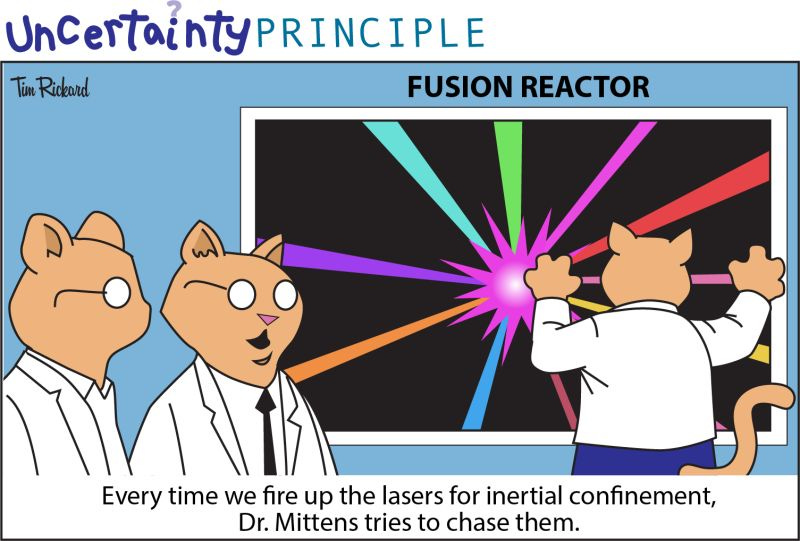Trump Wins - What This Means for Fusion
Exploring the science and strategy behind the next big energy shift.
5 Things You Gotta Know
Fusion Energy at a Turning Point: Challenges and Opportunities
The New York Times covers the current state of fusion energy, describing the scientific breakthroughs and ongoing challenges in the quest to harness this clean power source. The interactive piece explores how recent milestones have brought fusion closer to commercial viability while also addressing the steep hurdles that remain, such as scaling up technologies and reducing costs. With input from experts and policymakers, the article offers a comprehensive view of fusion’s role in combating climate change and reshaping global energy systems.New Zealand’s OpenStar Fusion Reactor Sparks Global Interest
OpenStar, New Zealand’s innovative fusion reactor, aims to revolutionize the industry with a simplified design and lower-cost operation. By leveraging advanced computational modeling and novel plasma control techniques, OpenStar presents a compelling alternative to traditional tokamaks and stellarators. The article explores the potential impact of this reactor on the global fusion landscape, positioning New Zealand as a rising player in the pursuit of carbon-free energy.The Global Fusion Race is On
Countries worldwide are ramping up their efforts to develop and commercialize fusion energy, with governments and private investors pushing for breakthroughs that promise a clean, near-limitless power source. Fusion Energy Base explores the diverse approaches taken by major players like the U.S., Europe, China, and private companies, highlighting the competitive and collaborative dynamics shaping this emerging field. As countries vie for leadership in fusion technology, the path to commercialization is fraught with scientific, financial, and logistical challenges, but the pace of advancements is increasing optimism across the industry.Fusion and the Future: How to Secure U.S. Leadership
Critical steps are needed to maintain U.S. leadership in the fusion energy race, emphasizing the importance of strategic investment, policy support, and public-private partnerships. By investing in fusion technology now, the U.S. can position itself as a global leader in clean energy, helping to mitigate climate change and secure energy independence. This article advocates for regulatory frameworks and government funding that incentivize innovation, as well as the development of a skilled workforce capable of advancing fusion technology.The Off-the-Shelf Stellarator
IEEE Spectrum explores the resurgence of the stellarator, a type of fusion reactor with an unusual design that uses complex magnetic fields to contain plasma. Once considered impractical due to its challenging engineering requirements, the stellarator has gained renewed interest due to advancements in 3D printing and computer modeling. These innovations allow for the precise construction of the intricate shapes needed for stellarator reactors, potentially making it a viable alternative to the more common tokamak design in the quest for fusion energy.
Trump Wins – What Does It Mean for Fusion Energy?
BY MICHAEL HEUMANN
The Gist: The election results are in, and the fusion industry must look forward to the new Trump administration. The Fusion Report wanted to provide a first look at ways the new administration could impact the future of fusion energy. We are sure this story will evolve, but here is our perspective as of today.
Fusion Machine Thermal Blankets – The Basics
BY MICHAEL HEUMANN
Creating a Sustainable Power Source: With some notable exceptions, every approach to generating electricity from fusion heats water into high-pressure steam. The steam then turns a turbine and a generator, producing electricity. In this respect, most fusion machines are no different from nuclear fission reactors or fossil fuel power plants. In fossil fuel power plants, heat from burning natural gas or coal superheats water in a boiler, turning it into steam.
Peak Nano Building a US and Allied Nation Supply Chain to Fire Up Fusion Energy
SPONSORED CONTENT
Securing the Supply Chain: Today over 70% of the capacitor film and capacitors used in fusion energy are produced in China. Peak Nano has a new generation of capacitor solutions that are based on 100% patented IP and manufactured in Ohio with a secured allied nation supply chain to ensure energy generation security.
One Trip Around the Fusion Sun
BY SHAUN WALSH
Reflections on a Year in Fusion Energy: I have made the joke that one year ago, when I heard the word "fusion," I thought about restaurants. I have been a science-curious person for my 59 trips around the solar sun. Every day, the world gives us new things to be curious about, from the discoveries of the James Web Telescope to AI to CRISPR and many other topics. Being able to indulge my innate curiosity easily is one of the best things about living in the Internet age. Before I joined the industry, I learned about fusion energy by reading articles and watching documentaries and videos on YouTube. I have also been fortunate to work with some brilliant people who openly and enthusiastically share their knowledge and have a nuclear engineer son to ask questions when I get lost in technology.
Copyright © 2024 The Fusion Report (a re-grate-it, inc. brand)
Contact Us
Mike Heumann
editor@thefusionreport.com
Terms and conditions
Privacy policy
Substack subscriptions
Ignition Research














